Hebe was one of the Greek Deities who resided on Mount Olympus. She was associated with youth and prime of life but was not as famous as other Greek Deities.
She was depicted holding an eagle who is mostly seen drinking from the cup she holds. The eagle is believed to be the disguise of her father, Zeus.
Like all other ancient deities, Hebe, too, had numerous myths, legends, and interesting facts related to her. Though she was infamous during her time, she has become famous in the latter days of the Greek civilization.
Here is the list of the top 10 most interesting facts about Greek Goddess Hebe.
10. Hebe was the goddess of youth and the prime of life
Content
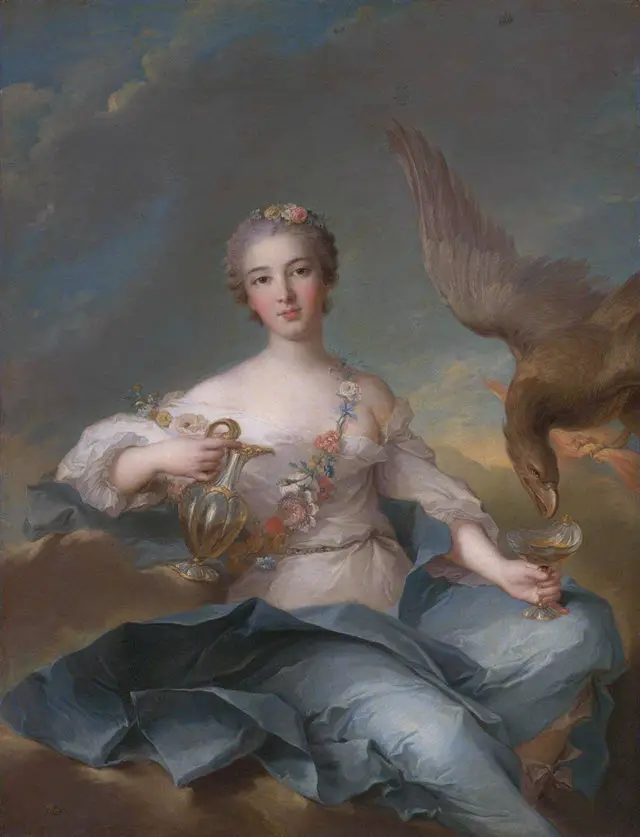
Hebe was one of the Twelve Olympians of Zeus. Like all other Olympians, she too was assigned a particular task. She was supposed to offer nectar that could grant everlasting beauty and life.
This gift was transferred to many other Olympian gods and people who were in need. The assignment of this duty made her the Goddess of youth or the prime of life.
Several deities approached her to help them out with their problems of not feeling youthful. She didn’t reply to them easily until they convinced her. She gave her blessing when she found it right to do to a particular person.
Once, Hebe had granted Iolaus’ wish to become young again to fight Eurystheus. Iolaus was old enough to be beaten by the enemy. This is the story from Euripides’ play Heracleidae.
At first, Hebe was reluctant to bestow the older man with a young warrior’s strength and youthful spirit. But Themis, who was a seer, convinced her that her gift could end the war. Then, she made Iolaus the young and powerful warrior.
She was also the keeper of the Fountain of Youth. The fountain was depicted as a natural spring that would restore an individual’s youth. In many ways, the goddess herself personified this spirit of youth and immortality.
9. Hebe was the patron of brides
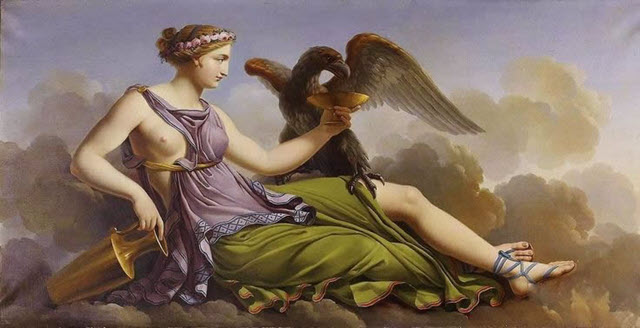
Hebe, associated with marriage, was the bridal attendant of Aphrodite, the goddess of love, beauty, and sexuality. She was described dancing with and acting as Aphrodite’s herald.
Hebe’s marriage also justifies her legacy as a patron of brides. She was married to Heracles, who was known for his strength and his Twelve Labors. As Heracles was born out of a mortal mother, he was a demigod but became immortal eventually.
The couple married when Heracles was deified on his funeral pyre at Mount Olympus. At Olympus, Hebe was a cup-bearer, but when she was married, she left her duty.
Her mother, Hera, was a lifelong enemy of Heracles. She was dissatisfied with her daughter’s wedding. It was a wedding that reconciled Heracles with his stepmother, Hera. To make matters worse, Hebe gave the gift of eternal youth, which further sparked Hera’sfury.
Since then, whenever the marriage was held in Ancient Greece, Hebe was worshipped along with Aphrodite and Hera. Unmarried girls also worshipped her to find their suitors.
8. Hebe was the mother of Alexiares and Anicetus

Hebe and Heracles had two sons, Alexiares and Anicetus. The children became minor deities in Greek Religion.
Alexiares and Anicetus refer to “he who wards off the war” and “the unconquerable” in Greek Mythology. They were the gods of sports, athletics, and defensive strategy.
Their father, Heracles, was the guardian of Mount Olympus. When Alexiares and Anicetus grew up, they assisted their father. As they were immortal by Hebe, they became gatekeepers of Mount Olympus.
Their job was to keep protection and fortification of towns and citadels. Greek people worshipped the twins in Thebes and Rhodes.
7. Hebe’s Roman equivalent is Juventas

Juventas was the Roman counterpart of Hebe. She was associated with youth, rejuvenation, and the goddess of young men wearing the toga.
Juventas was the daughter of Jupiter and Juno. Her siblings were Mars, Vulcan, Bellona, Discordia, Lucina, and Hercules. Hercules was her brother but later became her husband.
Her sacred attribute was Chalice, through which people worshipped her. Before the temple of Minerva on the Capitol, there was a chapel of Juventas. It was a place where youth deposited a coin on their assumption of the “toga virilis.”
People also offered sacrifice on behalf of the rising state of manhood to her. Romans worshipped her when they reached their manhood.
Her Chalice is connected with Tarquin’s wish to rebuild the temple district on the Capitoline. The temple was in the course of erection and about to finish in the building. But Terminus, the god of boundaries, and Juventas refused to quit the sites.
6. Hebe’s sacred attributes were Wine-cup, Eagle, Ivy, Fountain of Youth, and Wings
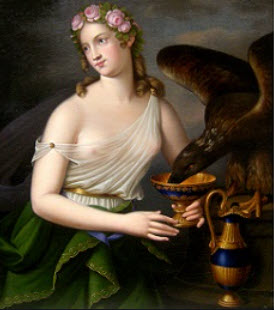
The wine cup was one of the sacred symbols of Hebe. It was associated with her after she was given the responsibility of bearing a cup by her father, Zeus. She would fill the cup with wine and offer it to her father.
Eagle was the sacred attribute of Zeus, who disguised it frequently. It came to Hebe as the eagle was connected with immortality.
Ivy, an everlasting plant, was also the sacred symbol of Hebe. It persists through the winter and blooms through the year and becomes the symbol of everlasting youth. The plant was also believed to drive out evil spirits from home.
Fountain of Youth is the most important symbol that Hebe had kept. Withdrawing some amount, she offered to the gods at Mount Olympus. It made the consumer ever-youthful and immortal.
Wings also emerged as Hebe’ symbol. Her father, Zeus, had gifted her two doves with human voices. One flew to where the Oracle of Dodona would be established. That’s why people worshipped wings.
5. Hebe is usually depicted wearing a sleeveless dress

In art, Hebe is portrayed as a beautiful and young girl. She wears a sleeveless dress and has a visible breast on her left side. Sometimes, she is nude to admire her everlasting beauty.
In several portraits, she has an ewer in her left hand over her head and a cup in her right hand.
As the goddess of the brides, she is always portrayed in wedding scenes. She is either with her parents at a wedding ceremony or with Aphrodite.
4. Hebe served the role of cup-bearer to Olympian deities
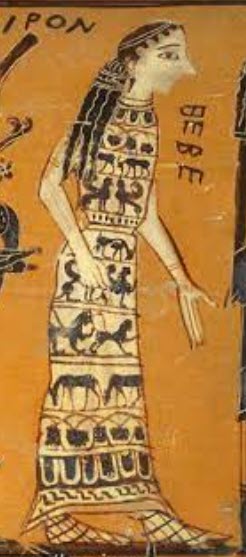
In ancient Greece, the female offspring served guests at home. It was the tradition at the time, and nobody could deny it. Even the daughter of Olympian Gods and Goddesses also served that domestic role.
As a daughter of Zeus and Hera, Hebe was a cup-bearer at home. In Mount Olympus, she would bring her golden Chalice filled with nectar and ambrosia to guests. This way, she allowed guests to receive the sustenance of immortality.
She also provided guests with food and drink. Besides, she prepared her mother’s chariot and drew the bath for her brother Ares.
Though Hebe’s duty was seemingly boring, she had some advantages. She had the gift of eternal youth that made her and others always young and beautiful. And it was reflected in her adolescent figure and fresh-faced appearance.
Once, Hebe striped her cloth while serving the beverage to the deities. Gods became angry after this accident and stopped her from serving her duty. They accused her of indecency. Later, she was replaced by Ganymede, who continued the cup-bearing duty after her.
3. Hebe was believed to be born after Hera ate Lettuce
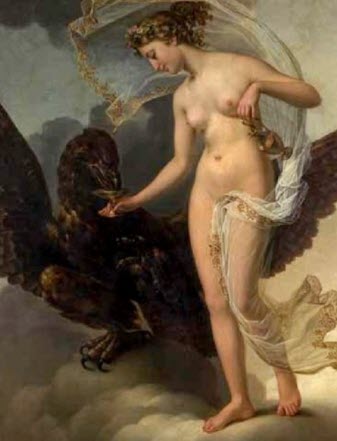
Hebe was the youngest daughter of Zeus and Hera. She was conceived by Hera after eating a lettuce plant.
When Zeus became the king of Mount Olympus, he traveled the earth, space, and many other places. He had lovers everywhere he visited from, mortals to deities.
He had several illegitimate children from all his lovers. It infuriated Hera, and she tortured his children, who were born out of an affair. One of the victims was Heracles.
When she was fed up with Zeus’ affairs, she bore the child without his help. She sought a way by traveling to the realm of Oceanus and Tethys at the end of the world.
She went to the garden of Flora and touched a sole. It was a nameless plant from the land of Olene. With her touch, Hera became pregnant with Ares.
When she returned to the garden sometime later, she was with her son, Apollo. There they had dinner together. While dining, she found Lettuce and ate it. After eating the Lettuce, she was pregnant with Hebe.
2. Cynosarges and Sicyon were places dedicated to Hebe
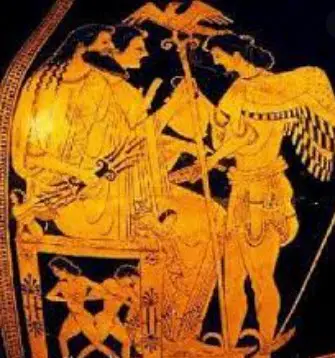
Hebe was strongly associated with spring. It represents the change of season from spring to autumn. This myth is also connected with Hebe as the goddess of youth.
As the goddess of youth and prime of life, she has her cult and one temple. Cynosarges was a temple where an altar for Hebe was in Athens. The temple also featured gymnasiums and altars for Heracles and a joint altar to Alcmene and Iolaus.
According to Aelian, Hebe shared her altar in temples along with her spouse, Heracles. There, temples were separated by a canal. Heracles’ temple housed roosters, while Hebe’s temple had hens.
Sicyon was one of Hebe’s special places. There she had a temple dedicated to her, and it was the center of her cult. Near Sicyon, Phliasians lived, and they worshipped her.
Hebe also was the goddess of pardons or forgiveness. Phliasians honored the goddess by pardoning supplicants. Then, freed prisoners would hang their chains in the sacred grove of her sanctuary at Phlius.
1. Hebe was worshipped along with Hera and Heracles

Greek people worshipped Hebe along with her parents, husband, and her siblings. Argos and the Heraion of Argos were the center places for Hera’s cult. There Hebe’s statue was also established beside her mother.
Whenever the bridal ceremony or wedding was held, Hebe was next to her mother. People also worshipped her along with her mother as similar to Demeter and Persephone.
Demeter was the goddess of the harvest and agriculture, whereas Persephone was the queen of the underworld.
The couples were mothers and daughters who represented the cycle of rebirth and renewal. Both mothers loved their daughters and struck some similarities.
As a goddess of marriage, Hebe was also worshipped along with her husband, Heracles. Besides, Greek people also worshipped her with many other deities such as Athena and Apollo.
Conclusion
Hebe represented the female aspect of Ancient Greek Mythology. She also justified their status as members of the Olympian family due to her angelic persona and gift.
Though she had a gift of immortality and everlasting youth, she was taken as a minor goddess. She also was hidden in the Greek pantheon. That’s a dissatisfying fact.
Was Hebe a minor deity in Greek Mythology? What do you think about her after the above facts? You are all welcome to the comment section.
See Also:
